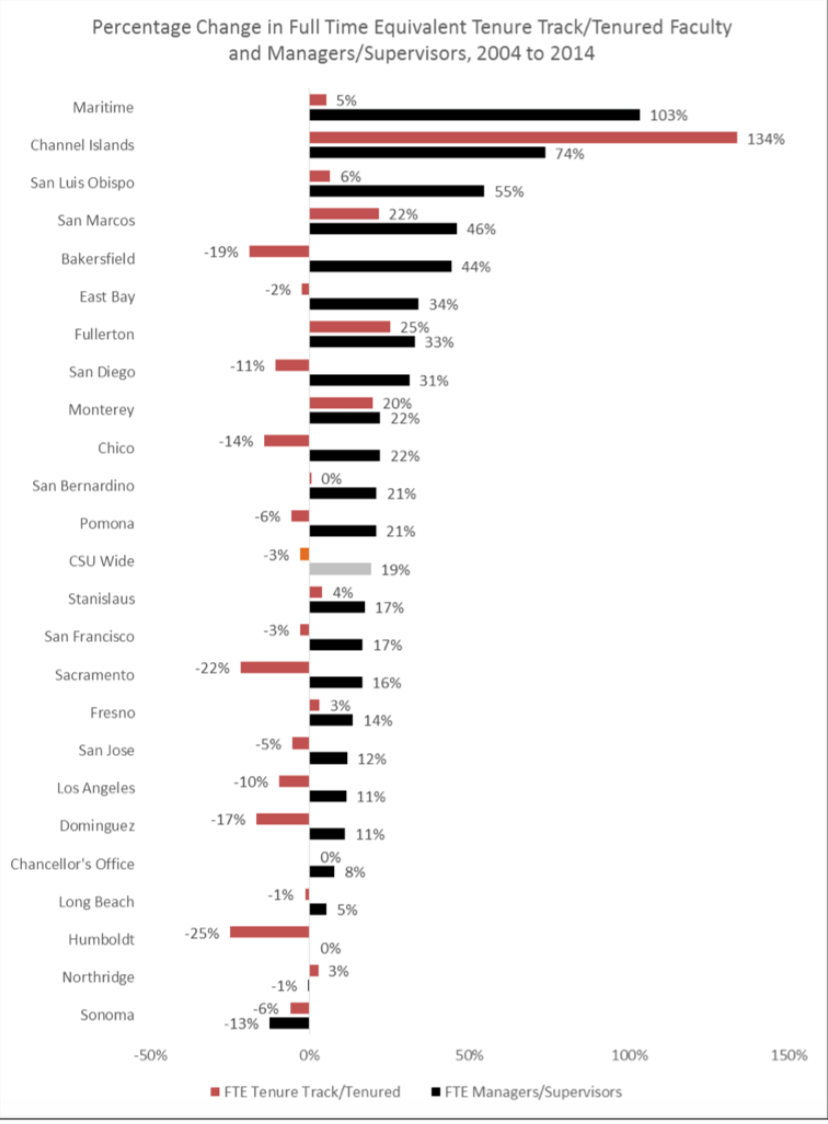The CSU’s administration has gotten itself into a pattern of prioritizing its own needs over the students and faculty it supposedly serves. CSU administrators across the system have used state budget cuts to radically realter the ways in which the CSU serves Californians–and the outcome is a system which positions its agenda around the needs and priorities of corporate billionaires, the wealthiest and most powerful Californians, and their puppets (the CA State Legislature, Governor Brown, and CSU leadership). Don’t believe us? Read on…
Some Hard Facts: As Vice President Joe Biden said, “Don’t tell me what you value. Show me your budget, and I’ll tell you what you value.”
- From 1998 to 2011, top CSU Exec salaries rose by 71.1%, while faculty salaries only rose by 27%
- According to the CSU Chancellor’s financial audit, only about 35% of the university’s operating costs went “directly to instruction”- the primary mission of the CSU.
- During 2008-2012, CSU spent $6 million on raises for 550 managers, while rejecting recommendations from a third party to spend the same amount on raises for faculty.
- In November 2014, the BOT voted ‘yes’ on CSU executive pay increases of 3.0%. That raised the Chancellor’s salary to $422,300 in pay, not including housing and car allowance.
- Expenditures on managers and supervisors grew at a faster rate than the CSU’s net operating budget. (The CSU’s Net Operating Budget is the money it receives from the state and student fees minus nancial aid commitments.)
- Not a single CSU campus has had an increase in tenure-line faculty consistent with student population growth over the last decade. In fact, at a number of campuses where the percentage loss in permanent faculty was greatest, there was also a robust increase in administrators. These contrasts are most glaring at Bakersfield, San Diego, Chico, Sacramento, Los Angeles, Dominguez Hills, and Humboldt.
- At 22 campuses, the average manager/supervisor salary increased more than the average faculty salary. The standout campus is Humboldt, where the average faculty salary has only increased by a shocking 1% while the average manager/supervisor salary has increased by 42%.
- In what is now a familiar pattern, CSU presidential raises were significantly larger than increases in the average CSU faculty salary from 2004 to 2014. System-wide, the average faculty salary only increased by 10% while the average campus president salary rose by 36%. The gap between campus president’s pay and average faculty salary also widened on all 23 campuses.



